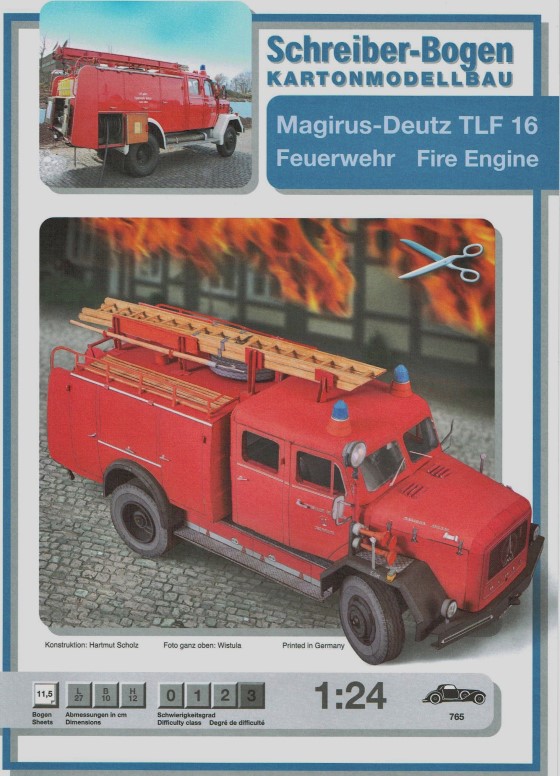Wright-Flyer I (1903) 1:24
Wright-Flyer I, on which the Schreiber model is based, was designed and built in 1903 by the brothers Wilbur and Orville Wright and is considered to have been the first motor plane. It was 6.43 meters long, had a wing span of 12.29 meters and a total weight of approx. 340 kilograms. The gross wing area was 47.4 m2. Flyer I was propelled by a four-cylinder carburettor engine, which the Wright brothers had designed themselves. The engine was water-cooled and had 12 HP. The plane was equipped with two pusher propellers that were 2.59 meters in diameter. Thus the plane"s top speed was 48 km/h. The first demonstration given on 14th December 1903 resulted in a false start during which the Flyer was damaged. Repairs took three days, and on 17th December 1903 there was a second attempt. On this day the longest flight lasted for 56 seconds, during which a distance of 260 meters was covered. Despite the fact, that during its last flight of the day the Flyer was destroyed by gusty winds, the Wrights were able to call their demonstration a success. Wilbur and Orville Wright had been fascinated by flying since their early childhood days. Due to their technical expertise as bicycle manufacturers and their studying of the books of Lilienthal and the American aviation pioneer Cha-nute they were able to make their dream come true. Wilbur Wright and Chanute were close friends. The Wright brothers lived and worked in Dayton, Ohio. Their test flights, during which they took turns in taking control of the plane, were performed in Kitty Hawk, North Carolina. The Wrights didn"t stop with Flyer I. As early as 1904 the brothers had constructed its successor, Flyer II, which was equipped with a new engine. With this plane they set up a new world record by covering a distance of 4.4 kilometres in 5 minutes. Only a short time later, in winter 1904/1905, the brothers already worked on a new improved version. The most prominent characteristic of Flyer III was a new steering system with separate control cables. This allowed for easier turns, as well as circles and figure eights. This plane flew for 38 minutes, crossing a distance of 39 kilometres. In the first versions of the plane the pilot"s position was still lying down, just as was practised in gliders. Later on models were developed, in which the pilots actually sat. In 1911 even a two-seated version of the Wright-Flyer was constructed. Initially the Wright brothers received hardly any recognition for their work at all. Among others it was their father, Bishop of the Anglican Church, who cursed their attempts at flying as blasphemy. The general public thought motor aviation impossible, taking no notice of the achievements of the Wright brothers, who only found their failures covered by the press. The Wrights, however, were so convinced of their project, that they even offered it to the military in 1905. The army, however, was not interested. This changed in the year 1908, when the Wrights, after long negotiations, were finally given permission to make an official demonstration of Flyer III. Thus their progress was also noticed by the general public, the breakthrough had been achieved.







